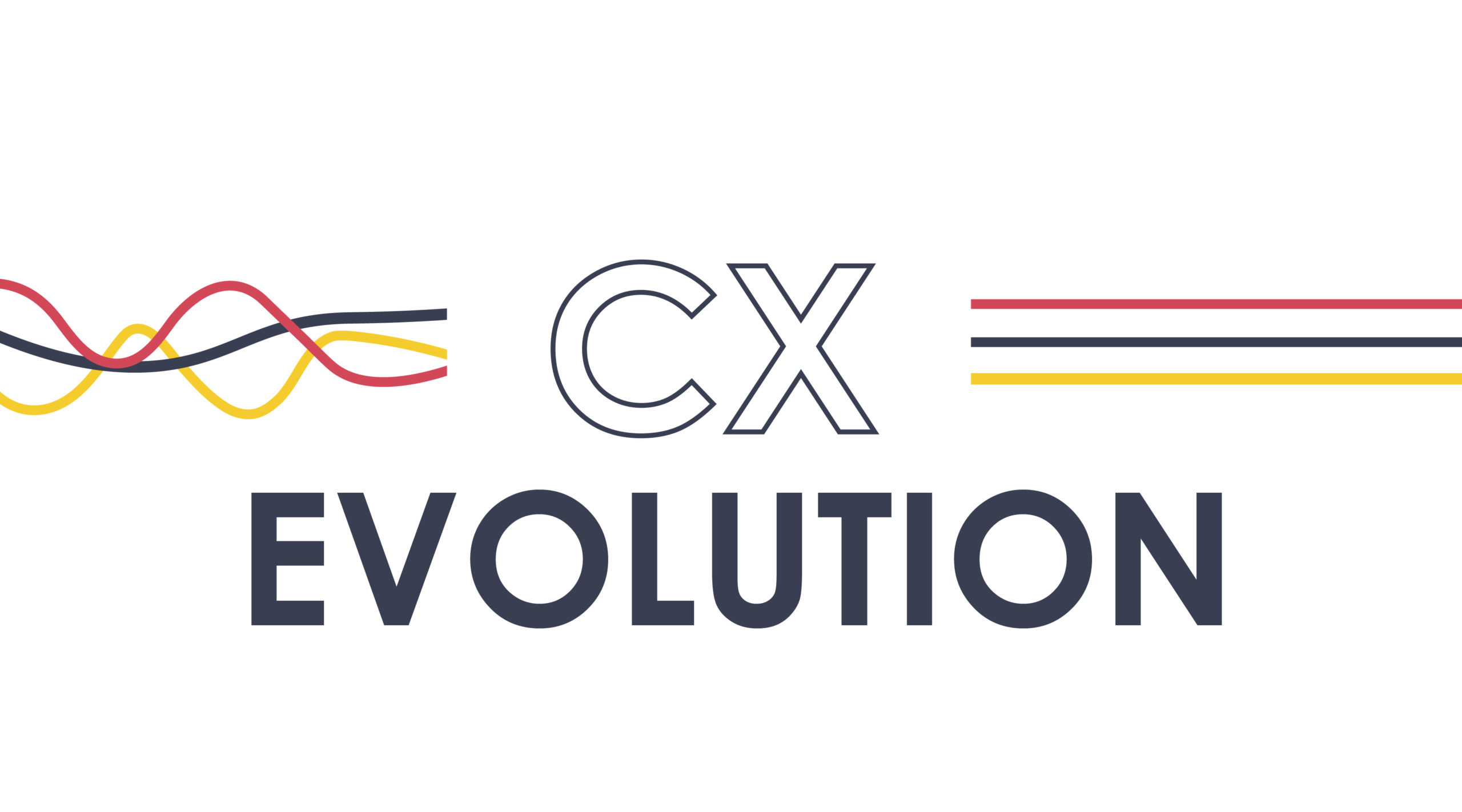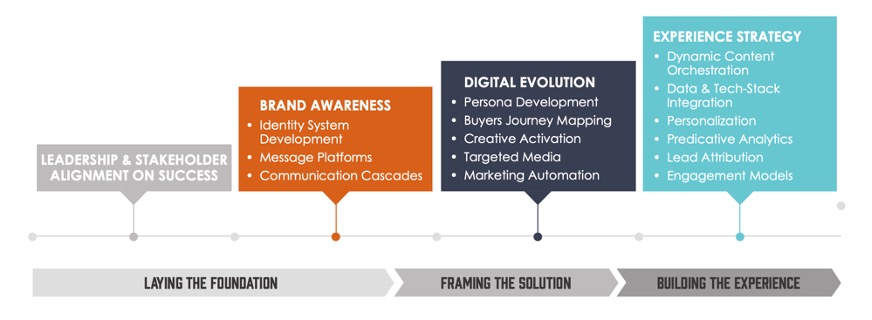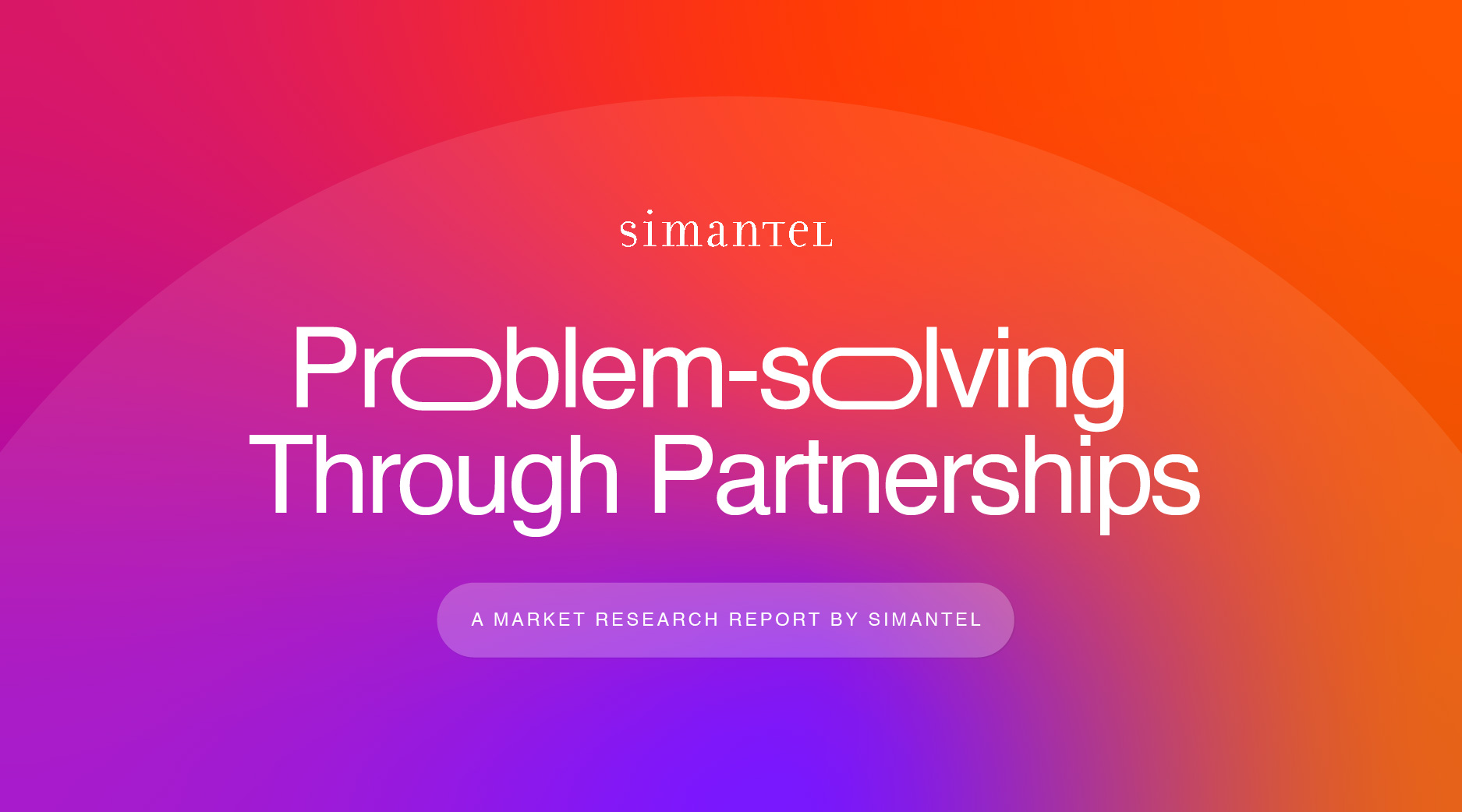As a B2B brand marketer, where do you begin the CX evolution for your infrastructure brand? If you want to achieve a successful outcome, the key starting point is to drive toward alignment. That means achieving alignment from executive leaders on the business outcomes they seek and then illuminating how these business objectives intersect with customer experience improvements.
Once you have achieved alignment, we offer a simple roadmap to CX maturity. Its three phases represent the maturity curve of your current marketing efforts, using the analogy of a house. Just as a home must have a foundation before the walls are framed — much less a roof or landscaping — marketing CX maturity takes similar steps to achieve sophistication.
As a marketer, you’ll consider which stage of the “building” process your brand is now in.
Phase I: Laying the Foundation
Phase II: Framing the Solution
Phase III: Building onto the Experience
10 Critical Conversations
Phase I is about auditing where you are and uncovering the gaps from subject-matter experts so they are clear on what must be solved. To accomplish this, we have identified (at least) ten critical conversation topics with key stakeholders to ensure everyone is on the same page and moving in the same direction. The conversations found in our blog about Phase 1 include identifying goals, audience segmentation, brand and messaging among other things.
Depending on stakeholders’ availability and interest, Phase I can take anywhere from a few weeks to many months. Therefore, the intent is not to have everything answered before any effort can move ahead. Your role as a marketer is to keep things moving day-to-day and to support the sales process, even as longer-term planning happens behind the scenes.
Framing the Solution
Once you have gained alignment and have spent time in critical conversations with key stakeholders, you are ready to start Phase II: framing your CX solution. In this phase, you will visualize the prioritized audiences you seek to reach and the customer journey you seek to support – something everyone can rally around.
In the beginning, you will develop customer personas (semi-fictional representations of your ideal customer, based on market research and real data about existing customers) and do journey mapping. With a basic journey map, you may then audit the available technologies/data around each touchpoint to determine what you can and cannot currently measure and aggregate.
Once you have developed your customer personas and journey maps, you then need to craft a plan to use these tools to frame your broader content, data and technology solution. You will explore data modeling, creating a content engine, and assessing your current technology to see where improvements need to be made in this phase.
Building the Experience
After all of the hard work of Phases I and II, Phase III is where you begin leveraging technology and strategies in order to reach your marketing goals. Many marketers want to skip directly to Phase III, but without a solid foundation and framing the walls, your house will fall apart and the overall experience will fall short. It is important to keep in mind that, though you may have arrived at Phase III, your job is to continue to maintain solid CX by shifting and adapting to market trends.
The three key pillars to CX success are:
1. Offer timely information, win with ease
2. Lead with logic, win with emotion
3. Know your customers well, then win by personalizing to new customers
To dive deeper into what it takes to gain alignment and achieve better CX — check out The Big Lil’ Book of CX. It is packed full of tips, tricks and tools that you can use today to solve the CX challenge.
Download the Full eBook Here:






